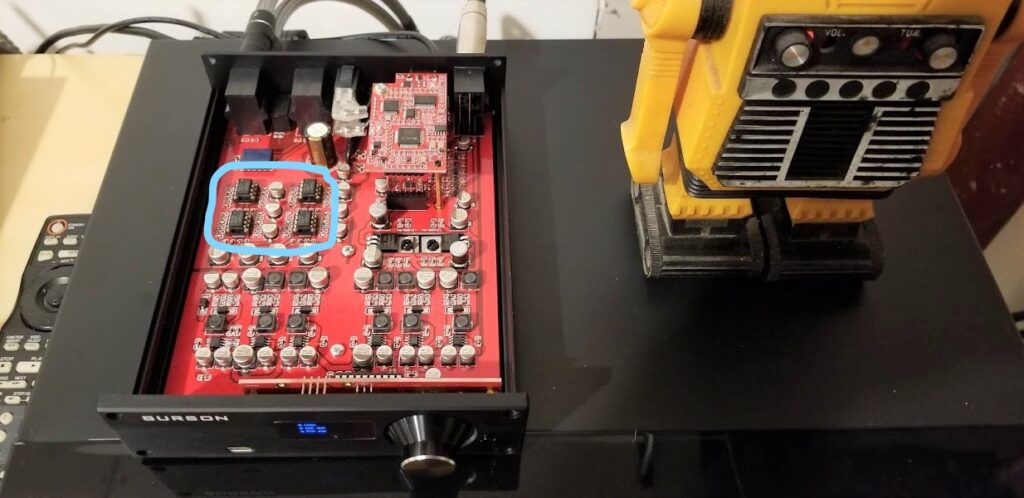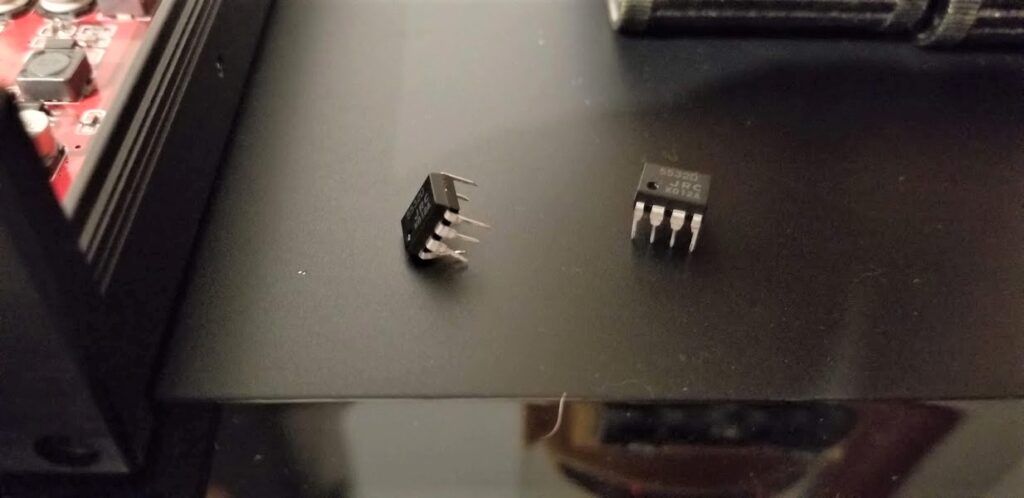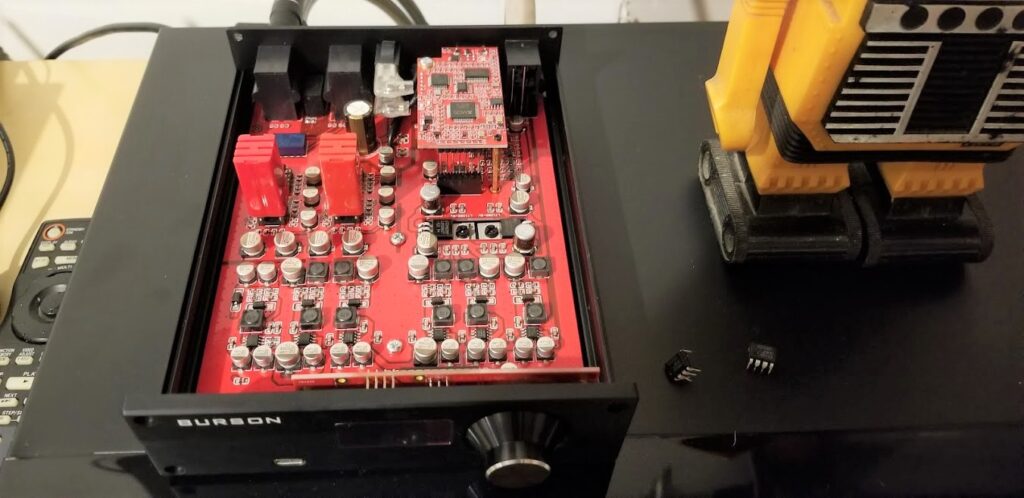The opportunity has come my way to upgrade my long-term Burson Swing DAC that I first featured in March of this year (see “Thunder from Down Under”). The possible improvement comes by way of a pair of the optional V6 Vivid Dual Opamp chips, available through Burson’s website for $145.00. After enjoying the benefits of the Burson in my two-channel system for a few months, the folks at the factory reached out to me on the step up as a final wrap up.
Upon arrival of the new chips, I looked online for instructions on performing the modification, but alas, could find next to nothing. As with the Swing itself, there is painfully little information out there. I was on my own. Disconnecting power from the unit and removing the top cover of the Swing, I immediately noticed that there were not two, but a total of four Opamp chips. Contacting a representative of Burson, it was recommended that I replace the front two of the four for optimal results.

Not having a tool to remove chips, I undertook the job of removing the original chips with my bare fingers. This resulted in the unfortunate bending of a couple of the pins. Let this be a lesson to you, should you be considering this yourself. They are not easy to remove in a gentle fashion. There are tools designed for such a task, but alas, I do not own one. The new chips went in very easily, though, immediately seating properly.

Reconnecting power to the unit, I played the song I had started with before (more on that in the listening section). Much to my chagrin, I only had sound from one channel now. Disconnecting power once more, I very carefully removed one chip and flipped it 180 degrees. Once reconnecting power and listening once more, I now had both channels, but very weak signal. I was onto something but had a bit more to do. Removing power once again, and nervously removing both chips and replacing them so that the logos faced left, I reconnected, and powered the unit back on once more. Eureka! I had found the winning combination!
What I had also discovered is that now, with the taller V6 Vivid Dual Opamps in place, the new components prohibited bolting the cover back into place. This would now be a convertible unit.

Listening
To give myself a frame of reference, I played Mark Knopfler’s “Sailing to Philadephia” from CD through the coax input before making the upgrade. Taking in the first two minutes of the track before making the modification, I set about the work right away to keep the sound fresh in mind.
The musical change, once the V6 Vivid Dual Opamps are in operation, is immediate. What made the Burson Swing remarkable in the first place, if you read my original review, was that it opened up the bottom of my sonic landscape as soon as I put it in my system. This upgrade now does the same for the upper end. There is a new expansiveness and airiness in this recording than when listening to it with the original chips. Knopfler and Taylor’s voices are both loftier now. The percussion in background is crisper and the cymbals have more ring to them. There seems to be a little bit of a veil lifted off of the music now that I didn’t even realize was there previously.
On Roger Hodgson’s “In Jeopardy,” this new aforementioned expansiveness is simply fun in my listening room, with the thick backing vocals bouncing around while the piano remains very grounded. The Burson Swing had already proven itself to be a great player with a large soundstage and impressive depth, but this is a worthwhile improvement.
My sample piece Swing is giving me a difficult time, not allowing me to switch sources, which is preventing me from running Qobuz tracks through it. This is a disappointment and is restricting me to spinning CDs exclusively.
Finally opting for Peter Gabriel’s “Digging in the Dirt” as a last selection, there is all the original depth that made me like the Swing in the first place with the detail on top. Overall, the Burson now produces a smoother balance among all vocals and instruments, while bringing you closer inside the recordings.
Wrapping it up
Though the Burson Swing has given me some trials and tribulations, the sound quality has ultimately won me over. With the Opamps upgrade, the Swing becomes a much more formidable piece of hardware, albeit an open-top one. Ultimately, it should be your ears that decide on what makes a component or upgrade worthwhile, and it is in this aspect that the Burson comes out a winner.
Associated Equipment
Pioneer DV-47A SACD/CD player
Quad Vena II Play Integrated Amplifier
Usher SD-500 Speakers
Canton AS 22 SC subwoofer
Audio Art Cables IC-3 e2 RCA interconnects
Audio Art Cables D1-SE2 digital coax interconnect
Audio Art Cables SC-5 e2 Cryo bi-wire speaker cables
Audio Art Cables Power1 ePlus power cable